In the C text the pair of heuheu birds sticking together are basically the
same as the pair joined together in the G text.
Piri. 1. To join (vi,
vt); to meet someone on the road; piriga, meeting,
gathering. 2. To choke: he-piri te gao. 3. Ka-piri, ka
piri, exclamation: 'So many!' Ka-piri, kapiri te pipi,
so many shellfish! Also used to welcome visitors:
ka-piri, ka-piri! 4. Ai-ka-piri ta'a me'e ma'a,
expression used to someone from whom one hopes to receive some
news, like saying 'let's hear what news you bring'. 5. Kai
piri, kai piri, exclamation expressing: 'such a thing had
never happened to me before'. Kai piri, kai piri, ia anirá
i-piri-mai-ai te me'e rakerake, such a bad thing had never
happened to me before! Piripiri, a slug found on the
coast, blackish, which secretes a sticky liquid. Piriu, a
tattoo made on the back of the hand. Vanaga. 1. With, and. 2. A
shock, blow. 3. To stick close to, to apply oneself, starch;
pipiri, to stick, glue, gum; hakapiri, plaster, to
solder; hakapipiri, to glue, to gum, to coat, to fasten
with a seal; hakapipirihaga, glue. 4. To frequent, to
join, to meet, to interview, to contribute, to unite, to be
associated, neighboring; piri mai, to come, to assemble,
a company, in a body, two together, in mass, indistinctly;
piri ohorua, a couple; piri putuputu, to frequent;
piri mai piri atu, sodomy; piri iho, to be addicted
to; pipiri, to catch; hakapiri, to join together,
aggregate, adjust, apply, associate, equalize, graft, vise,
join, league, patch, unite. Piria; tagata piria,
traitor. Piriaro (piri 3 - aro), singlet,
undershirt. Pirihaga, to ally, affinity, league.
Piripou (piri 3 - pou), trousers. Piriukona,
tattooing on the hands. Churchill.
|
454 |
 |
 |
15 |
 |
|
Ga3-1 (60) |
Ga3-2
(61 = 77 - 16) |
Ga3-18 (77
= 61 + 16) |
|
AL TARF (The End) |
BRIGHT FIRE (λ
Cancri) |
AL MINHAR AL ASAD |
|
471 (= 1.5 * 314
= 455 + 16) |
day zero (0) |
|
472 (= 16 * 29½ =
8 * 59 = 4 * 118) |
However, the hole between them has broken
through, and their
eyes have been removed:
|
e
manu piri rua |
|
 |
|
Cb9-26
(392 + 226) |
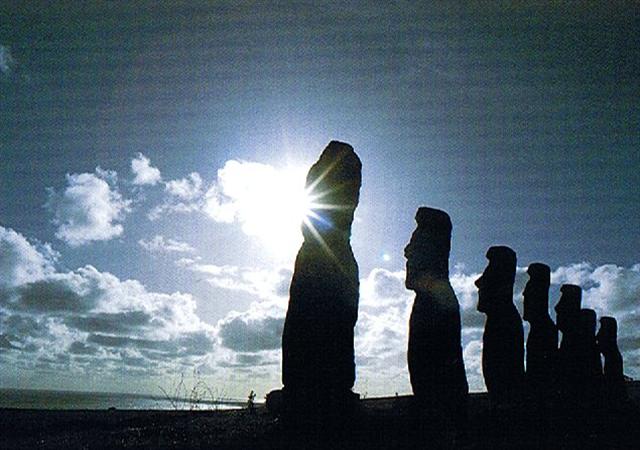
... On the late afternoon of the June
solstice, towards sunset, we reached Ahu Akivi near
the centre of the western side of Easter Island. This is an
inland site, 3 kilometers from the coast. Like Ahu Nau
Nau at Anakena, it has seven Moai, but in
this case none of them have topknots and, uniquely, all face
west towards the sea - which is clearly visible from the
high point on which they stand.
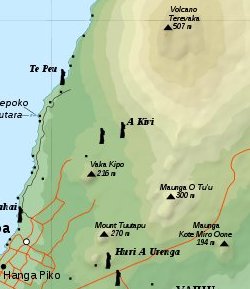
There is a curious tradition concerning
these grizzled, otherworldly statues, solemn and powerful,
with their blank, aloof eye-sockets gazing out over the
limitless ocean. Like most of the other Moai of
Easter Island the local belief is that they died, long ago,
at the time when mana - magic - supposedly fled from
the island never to return. However, in common with only a
very few of the other Moai, it is believed that these
particular statues still have the power, twice a year, to
transform themselves into aringa ora -
literally 'living faces' - a concept startingly similar to
the ancient Egyptian notion that statues became 'living
images' (sheshep ankh) after undergoing the ceremony
of the 'opening of the mouth and the eyes'. Statues at
Angkor were likewise considered to be lifeless until their
eyes had been symbolically 'opened'.
The great stone Moai of Easter
Island were at one time equipped with beautiful inlaid eyes
of white coral and red scoria. In a number of cases - though
not at Ahu Akivi - sufficient fragments have been
found to make restoration possible, showing that the figures
originally gazed up at an angle towards the sky. It is
therefore easy to guess why this island was once called
Mata-Ki-Te-Rangi, 'Eyes Looking at Heaven'. On a moonlit
night its hundreds of 'living' statues scanning the stars
with glowing coral eyes would have seemed like mythic
astronomers peering into the cosmos. And in the heat of the
day those same eyes would have tracked the path of the sun,
which the ancient Egyptians called the 'Path of Horus' or
the 'Path of Ra'. This was also the 'path' pursued by the
Akhu Shemsu Hor, the 'Followers of Horus', for whom the
exclamation Ankh'Hor - 'the god Horus Lives' - would
have been an everyday usage.
The
principal astronomical alignments of the great temple of
Angkor Wat in Cambodia are towards sunrise on the
December solstice and sunrise on the March equinox -
respectively midwinter and the beginning of spring in the
northern hemisphere. The two moments in the year when Easter
Island traditions say that the Moai of Ahu Akivi
come alive and are 'particularly meaningful' are the June
solstice and the September equinox - respectively midwinter
and the beginning of spring in these southern latitudes.
Rigorous archaeoastronomical studies by William Mulloy,
William Liller, Edmundo Edwards, Malcolm Clark and others
have confirmed that the east façade of Ahu Akivi does
have a very definite equinoctial orientation and, indeed,
that 'the complex was designed to mark the time of the
equinoxes' ...
The distance from the preceding manu kake is 618 -
495 = 123 days:
|
 |
122 |
 |
|
Cb5-9 (495) |
Cb9-26 (618) |
We should here take the opportunity to repeat and
consolidate our knowledge of the flow of stars and dates in
the C text. A good point to begin from is heliacal Betelgeuze:
| te
hokohuki |
te moko |
te
hokohuki |
|
Hoko. 1. To
jump; to rock or swing in
rhythm with the chants in festivals, as was
the ancient custom; an ancient
dance. He to'o mai e te hoa manu i te
mamari ki toona rima, he ma'u, he hoko,
the 'bird master' receives the egg in his
hand and carries it, dancing. 2. Number
prefix: 'in a group of...':
hokotahi,
alone; hokorua, in a group of two (also companion, e
hakarere te kai mo toou hokorua, leave
some food for my companion); hakatoru,
in a group of three, etc.; hokohía,
in a group of how many? Hokohía ana oho
koe ki te rano? With how many people
will you go to the volcano? Vanaga. 1. To
traffic, to trade, to buy, to ransom (hoò);
hoòa te kaiga, to buy land. 2. To
sport, to play. Churchill. Move the body to
and fro with the rythm of a song. Barthel.
Huki.
1. Pole attached to the poop from which
the fishing-net is suspended: huki
kupega. 2. Digging stick. 3. To
set vertically, to stand (vt.). 4.
Huki á te mahina, said of the new moon
when both its horns have become visible.
Vanaga. 1. To post up, to publish. 2. To cut
the throat (uki). Mq.: Small sticks
which close up the ridge of a house. Ha.:
hui, the small uniting sticks in a
thatched house. Churchill. Standing
upright. Barthel. M. Spit for roasting.
Te Huki, a constellation. Makemson.
Hukihuki. 1. Colic. 2. To transpierce, a
pricking. 3. To sink to the bottom.
Churchill. |
 |
 |
 |
|
Ca4-10 |
Ca4-11 (3 * 29) |
Ca4-12
(88) |
|
CLOSE TO THE FULL MOON: |
|
μ Columbae (86.1), Saiph (86.5), ζ
μ
Columbae,
SAIPH (Sword) = κ Orionis
(86.5),
τ
Aurigae,
ζ
Leporis (86.6) |
υ Aurigae (87.1), ν Aurigae (87.2),
WEZN (Weight) = β Columbae,
δ Leporis (87.7),
TZE (Son) = λ Columbae
(87.9) |
Ardra-6 (The Moist One) /
ANA-VARU-8 (Pillar to sit by)
χ¹
Orionis,
ξ
Aurigae (88.1),
BETELGEUZE = α Orionis
(88.3),
ξ
Columbae (88.5),
σ
Columbae (88.7)
ZUBEN ELGENUBI (α Librae) |
 |
|
CLOSE TO THE SUN: |
|
MULIPHEN
(Oaths) = γ Ophiuchi
(269.0),
BASANISMUS = G Scorpii
(269.5),
PHERKARD (Dim One of the
Two
Calves) = δ Ursae Minoris
(269.9) |
PTOLEMY CLUSTER = M7 Scorpii
(270.5),
GRUMIUM (Lower Jaw) = ξ Draconis
(270.9) |
RUKBALGETHI GENUBI (Bending Claw) = θ
Herculis
(271.1), ξ Herculis (271.5),
ETAMIN (Head) = γ Draconis,
ν Herculis (271.7), ν Ophiuchi (271.8) |
|
Dec 15 |
16 (350) |
17 (80 + 88 + 183 = 351 = 27 * 13) |
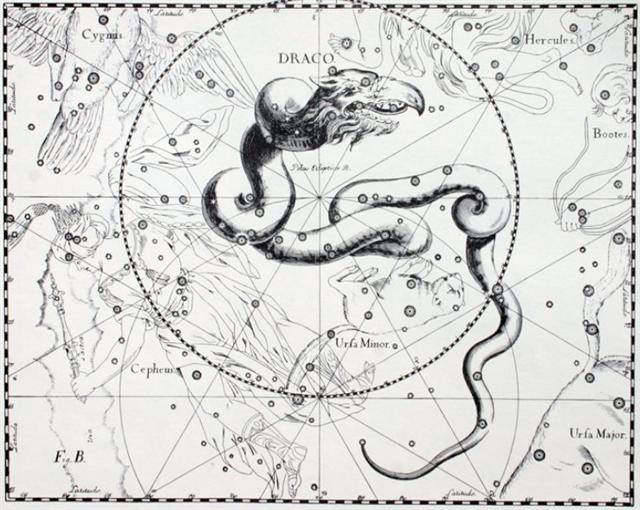 |
The first hurdle for us to overcome is the transition from
side a to side b of the tablet:
... And in the C text, we should remember,
107 was equal to 392 -
285, i.e. to 80 (Sirrah) + 27 (precessional days
down from my assumed epoch of rongorongo to that
at the First Point of Aries in Roman times):
|
273 |
- |
28
|
te honu kau |
manu kake rua |
te henua |
te honu |
te rima |
|
 |
 |
 |
 |
 |
 |
|
Ca13-20 (→ 360) |
*Ca14-25
(→ 350) |
*Ca14-26
(→ 364) |
*Ca14-27
(→
378) |
*Ca14-28
(→ 392) |
*Ca14-29 (392) |
|
March 18 (442) |
Ko
Honga (*346). |
ko Te
kena. |
Ko
Nuku kehu. |
ko
Ngavai. |
ko
Oti. |
|
Oti.
To come to an end; to suffice, to be
enough: ku-oti-á, it is finished;
ina kai oti mo kai, there is not
enough to eat; he-oti á, there
isn't anymore left, it's the last one;
it's enough with that. Vanaga. Ta.: 1.
Oti, presage of death. Sa.:
oti, to die. 2. To cut. Mq.: koti,
oti, id. Sa.: 'oti, id.
Ma.: koti, id. Churchill. |
|
DZANEB (→ Deneb, Tail) = ω Piscium
(362.4),
γ² Oct. (362.8)
*362.4 - *41.4 = *321.0
ACUBENS
|
*25 |
Pinwheel
Galaxy = M33
Trianguli
(22.1),
υ Andromedae
(22.9),
*362.8 + *25 - *365 = *22.8 |
ACHERNAR (End of the River) = α Eridani
(23.3),
χ
Andromedae (23.6),
τ
Andromedae (23.9) |
ALSEIPH (Scimitar) = φ Persei
(24.5),
τ
Ceti (24.7) |
No star listed (25) |
ANA-NIA-10 (Pillar-to-fish by)
χ
Ceti (26.1),
POLARIS = α Ursae Minoris, BATEN KAITOS
(Belly of the Fish) = ζ Ceti
(26.6),
METALLAH (Triagle) = α Trianguli
(26.9) |
|
*26.6 + 365.25 - *362.8 = *29.05 |
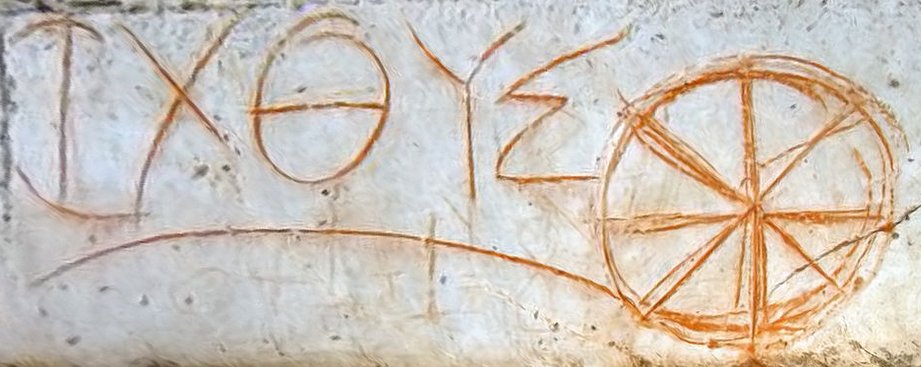 |
|
CLOSE TO THE SUN: |
|
ο Hydrae (176.1)
362.8
- 176.1 = 186.7 |
28 |
HEZE =
ζ
Virginis
(205.0),
Southern Pinwheel Galaxy = M83
Hydrae
(205.7) |
ε Centauri (206.3), κ Oct. (206.4)
*165.0 = *206.4 - *41.4 |
No star listed (207) |
τ
Bootis (208.2),
BENETNASH (Leader of the Daughters of
the Bier) =
η
Ursae Majoris
(208.5),
ν
Centauri (208.7),
μ
Centauri,
υ
Bootis (208.8) |
No star listed (209) |
|
Sept 13 (256 = 442 - 183 - 3) |
Oct 12 (285) |
13 |
14 |
15 (288) |
Oct 16 (289) |
|
32 days |
 |
I have suggested the first glyph on side a of
the C tablet was assigned to the night when the
Full Moon reached Algenib Pegasi (*1), i.e. at
the opposite side of the year compared to when
the Sun was in March 22 (81).
In day 80 + 88 = 168 (June 17) the Sun had
advanced to Betelgeuze (*88), and from there to
September 13 (256 = 16 * 16), to the Tail
(Dzaneb →
Deneb), there were also 88 days:
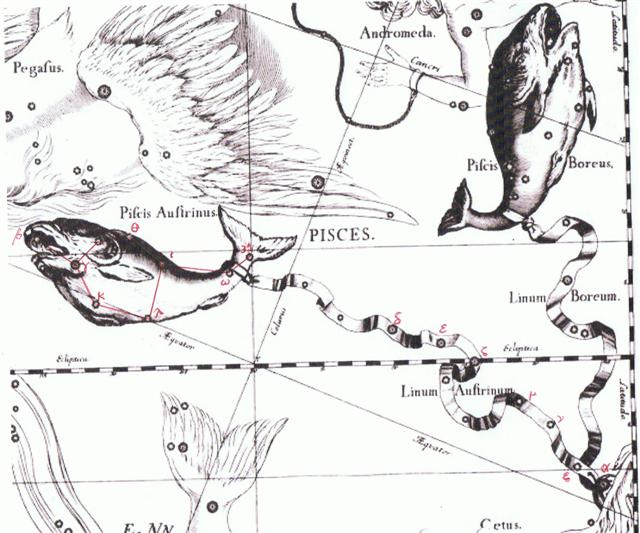
In the tresses of
Pacha-mama
(the World Mother) there were 32 extra days on
her left side:
|
Counting the
tresses from right to left: |
|
1 |
26 |
78 = 3 * 26 |
1 |
29 |
90 |
|
2 |
26 |
2 |
30 |
|
3 |
26 |
3 |
31 |
|
4 |
25 |
104 = 4 * 26 |
4 |
34 |
124 |
|
5 |
26 |
5 |
31 |
|
6 |
27 |
6 |
30 |
|
7 |
26 |
7 |
29 |
|
Total =
396 = 182 + 214
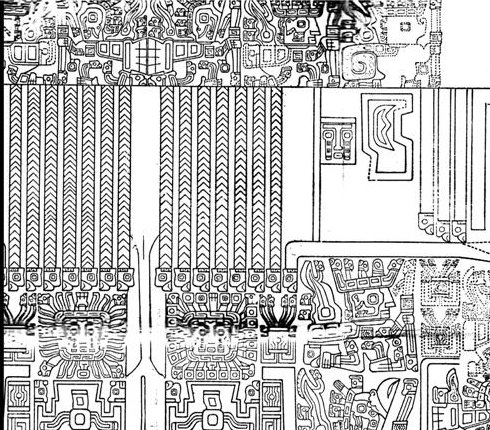 |
And on Hawaii there were
33 days
from the reappearance of the Pleiades in late
autumn to the winter solstice. This period was
presumably corresponding to the 'breaking'
between Ca13-20 and Ca14-29:
|
 |
32 |
 |
|
DZANEB |
POLARIS (*26.6) |
|
Sept 13 (256) |
Oct 16 (289) |
|
ACUBENS |
33 |
When changing from side a (governed by the
positions of the Full Moon) to side b, it would
be natural to change the perspective to that of
the daylight Sun. On side b there are 348 (= 12 * 29)
glyphs, and 348 + 16 = 364.
Beyond the pair Polaris and Baten Kaitos at the
Full Moon should therefore follow the heliacal
First Point of Aries at the beginning of side a:
| E
tupu |
ki
roto |
o
te hau tea |
ki
te henua - te maro |
rutua |
|
Rutu.1.
To read, to recite, to pronounce
words solemnly; he-rutu i te
kohau motu, to read the
rongorongo tablets; hare rutu
rogorogo mo hakama'a ki te ga poki
ite kai, i te rogorogo,
rongorongo school, house in which
children were taught reading and
writing the rongorongo signs. 2. To
pelt with stones. 3. To gather in
great numbers (of people). Vanaga.
Sound. Rutu-rongorongo = the
sound of recitation. Barthel. T.
Beat. Henry. To recite; tae rutu,
irreverence. Churchill. Pau.:
rutu, a drum. Mgv.: rutu,
to beat, to cause to resound. Ta.:
rutu, a drum, to drum. Mq.:
utu, to drum. Sa.: lutu,
to shake a rattle. Churchill.
 |
 |
 |
 |
 |
 |
|
Cb1-1 (393) |
Cb1-2 |
Cb1-3 |
Cb1-4 (396) |
Cb1-5 |
|
CLOSE TO THE SUN: |
|
April
17 (91 + 16)
Al Sharatain-1 /
Ashvini-1 /
Bond-16 (Dog) /
Mahrū-sha-rishu-ku-1 (Front of the
Head of Ku)
SEGIN = ε Cassiopeia, MESARTHIM = γ
Arietis, ψ Phoenicis
(27.2),
SHERATAN (Pair of Signs) = β
Arietis, φ Phoenicis (27.4)
*351.0 = *27.4 - *41.4 |
18 (108)
ι Arietis (28.0), λ Arietis (28.2),
υ Ceti (28.8) |
19
ALRISHA (The Knot) = α Piscium,
χ Phoenicis (29.2),
ε Trianguli (29.4),
ALAMAK (Caracal)
= γ Andromedae
(29.7)
*353.0 = *29.4 - *41.4 |
20
Arku-sha-rishu-ku-2 (Back of the
Head of Ku)
2h (30.4)
κ Arietis (30.3),
HAMAL (Sheep) = α Arietis
(30.5)
ALKES (α
Crateris) |
21 (111)
DELTOTUM = β Trianguli
(31.2), ι Trianguli (31.7), η
Arietis (31.9) |

... The present limit of the
celestial polar regions can be
defined from the declination of the
star
γ
Andromedae
... Its current place is at
declination 42º 05' N. In other
words the measure across the polar
regions should be 2 * (90º - 42º
05') = 2 * 47º 55' = 95º 50' or
around 96º. The width of the polar
regions is thus around 2 * 96º =
192º
and 360 - 192 =
168 = 2 * 84 (→ Julian spring
equinox).
... Gamma Andromedae ... is
the third brightest star in the
constellation of Andromeda. It is
also known by the traditional name
Almach (also spelt as
Almaach, Almaack,
Almak, Almaak, or
Alamak), from the Arabic
العناق
الأرض
al-‘anāq al-’arđ
...
'the caracal' (desert lynx). Another
term for this star used by medieval
astronomers writing in Arabic was
آلرخل
المسلسلة
Al Rijl al
Musalsalah 'the Woman's
Foot'. In Chinese,
天大將軍 (Tiān
Dà Jiāng Jūn), meaning
Heaven's Great General, refers
to an asterism consisting of
γ Andromedae,
φ Persei,
51 Andromedae, 49 Andromedae,
χ Andromedae,
υ
Andromedae, τ
Andromedae, 56 Andromedae, β
Trianguli, γ
Trianguli and δ
Trianguli. Consequently, γ
Andromedae itself is known as
天大將軍一 (Tiān
Dà Jiāng Jūn yī, English:
the First Star of
Heaven's Great General.)
In the catalogue of stars in the
Calendarium of Al Achsasi al
Mouakket, this star was designated
جمس
ألنعامة
Khamis al Naamat,
which was translated into Latin as
Quinta Struthionum, meaning
the fifth ostrich ... |
|
ko Sive (*351). |
ko Ngehu. |
ko Hatu (*353).
|
ko Tuki. |
ko Bu (*355). |
|
Hatu. 1. Clod
of earth; cultivated land; arable
land (oone hatu). 2. Compact
mass of other substances: hatu
matá, piece of obsidian. 3.
Figuratively: manava hatu,
said of persons who, in adversity,
stay composed and in control of
their behaviour and feelings. 4. To
advise, to command. He hatu i te
vanaga rivariva ki te kio o poki ki
ruga ki te opata, they gave the
refugees the good advice not to
climb the precipice; he hatu i te
vanaga rakerake, to give bad
advice. 5. To collude, to unite for
a purpose, to concur. Mo hatu o
te tia o te nua, to agree on the
price of a nua cape. 6.
Result, favourable outcome of an
enterprise. He ká i te umu mo te
hatu o te aga, to light the
earth oven for the successful
outcome of an enterprise. Vanaga. 1.
Haatu, hahatu,
mahatu. To fold, to double, to
plait, to braid; noho hatu,
to sit crosslegged; hoe hatu,
clasp knife; hatuhatu, to
deform. 2. To recommend. Churchill.
In the Polynesian dialects proper,
we find Patu and Patu-patu,
'stone', in New Zealand; Fatu
in Tahiti and Marquesas signifying
'Lord', 'Master', also 'Stone';
Haku in the Hawaiian means
'Lord', 'Master', while with the
intensitive prefix Po it
becomes Pohaku, 'a stone'.
Fornander. |
|
Gregorian equinox |
'March 22 (81) |
23 (107 - 29) |
24 |
Julian equinox |
|
7
(66 = 80 - 14) |
"March 8 |
9
(68) |
10 |
11 |
|
CLOSE TO THE FULL MOON: |
|
MUPHRID (Solitary Star) = η Bootis
(210.1), ζ Centauri (210.3) |
φ Centauri (211.0), υ¹ Centauri
(211.1), υ² Centauri (211.8), τ
Virginis (211.9) |
AGENA (At the Knee) = β Centauri
(212.1), θ Apodis (212.5),
THUBAN (Dragon) = α Draconis
(212.8) |
14h (213.1)
π Hydrae, χ Centauri (213.0),
MENKENT (Shoulder of the Centaur) =
θ Centauri
(213.1) |
Neck-2 (Dragon)
ASELLUS TERTIUS (3rd Ass Colt) = κ
Bootis, κ Virginis, 14 Bootis
(214.8) |

... The sky should be moving (rutua
te maeva) at the Caracal - when
the Full Moon would have been at
right ascension day *29.4 + *365¼ /
2 = *212 = at Thuban ...

... Thuban had been the star at the
North Pole when the great Egyptian
pyramids where built ... The star
could be seen, both by day and
night, from the bottom of the
central passage of the Great Pyramid
of Cheops (Knum Khufu) at
Ghizeh, in 30° of north latitude, as
also from the similar points in five
other like structures; and the same
fact is asserted by Sir John
Herschel as to the two pyramids at
Abousseir ...
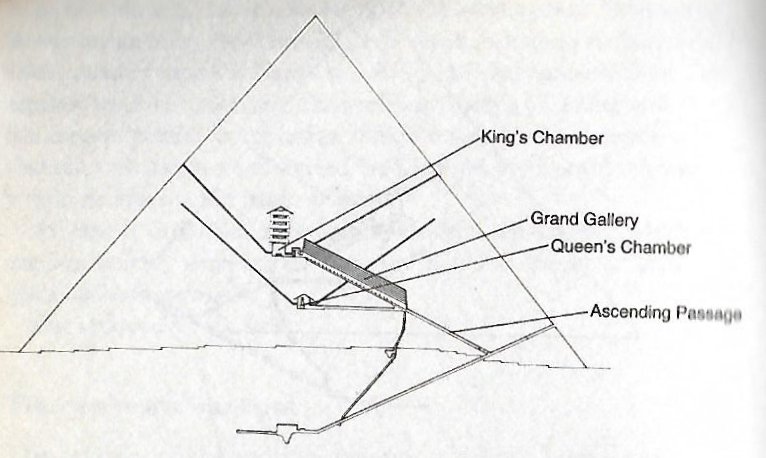
... For some reason, too, it had
taken their fancy to place the Great
Pyramid almost exactly on the 30th
parallel at latitude 29º 58' 51".
This, a former astronomer royal of
Scotland once observed, was 'a
sensible defalcation from 30º', but
not necessarily in error: For if the
original designer had wished that
men should see with their body,
rather than their mental eyes, the
pole of the sky from the foot of the
Great Pyramid, at an altitude before
them of 30º, he would have had to
take account of the refraction of
the atmosphere, and that would have
necessitated the building standing
not at 30º but at 29º 58' 22'
... |
|
'Sept 20 (236 + 27) |
21 |
Equinox |
23 |
24 (267) |
|
|
Due to the precession from Roman times the
Sun had moved around 29 days earlier in the
year as observed from the fixed stars.
Apparently the sky had moved ahead with
around 29 days.
Maeva.
T. 1. Move. Rangi-maeva = Moving Sky
(name of a marae).
2. Greet, greeting. Henry.
E
tupu (Cb1-1) - ki
roto - o
te hau tea - ki
te henua - te maro - rutua
(Cb1-5) - te pahu - rutua te maeva - atua
rerorero - atua hiko ura - hiko o tea - ka
higa te ao ko te henua ra ma te hoi atua
(Cb1-11) ...

|























